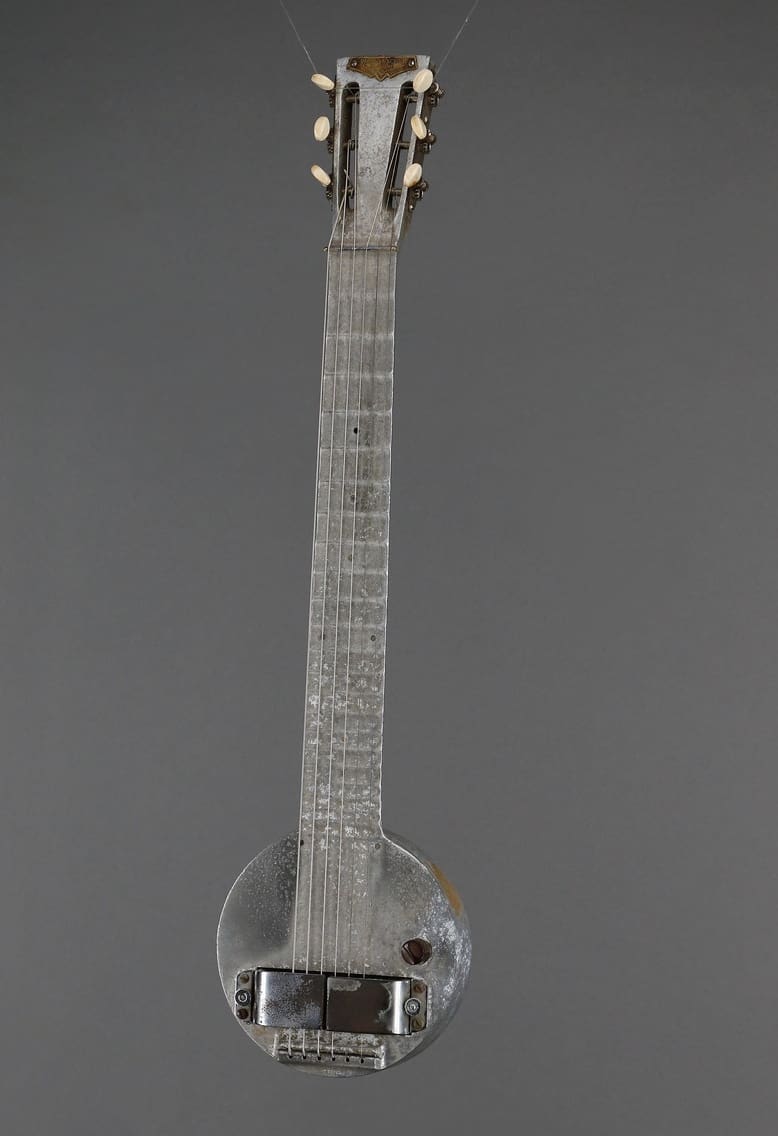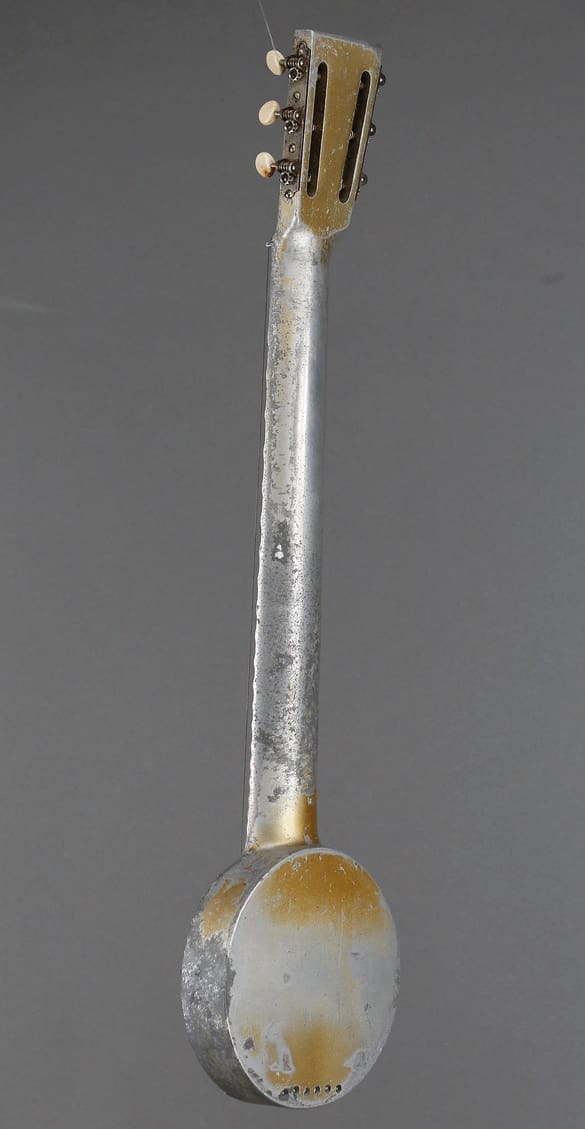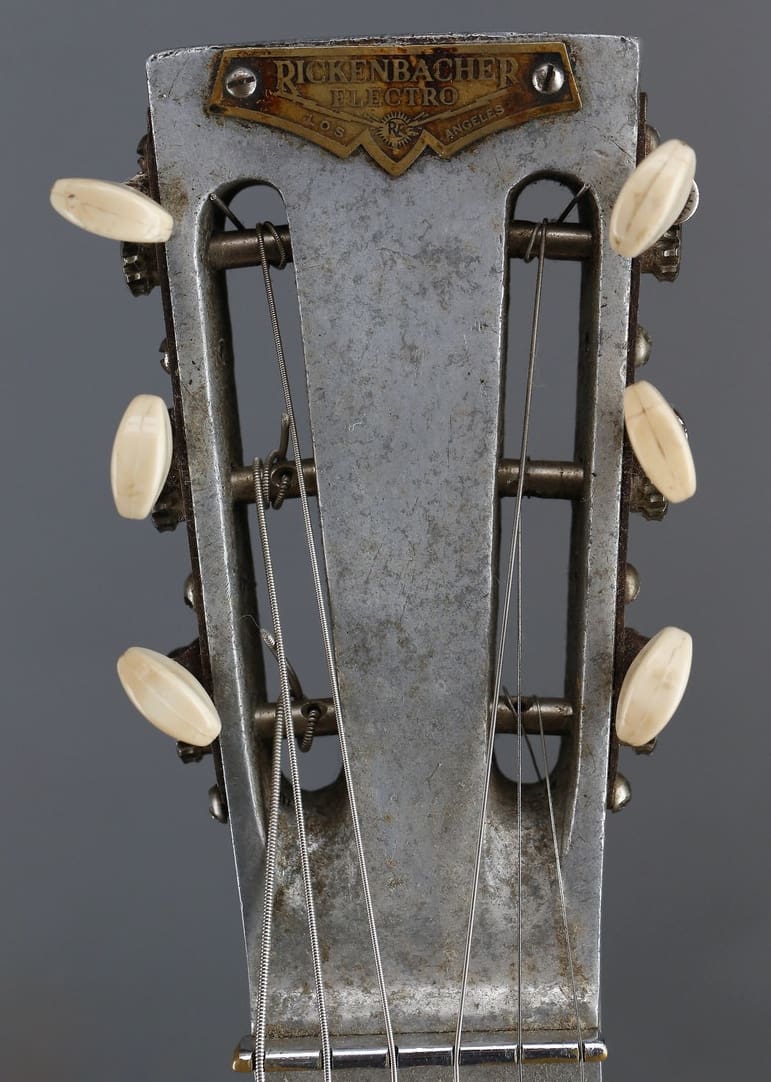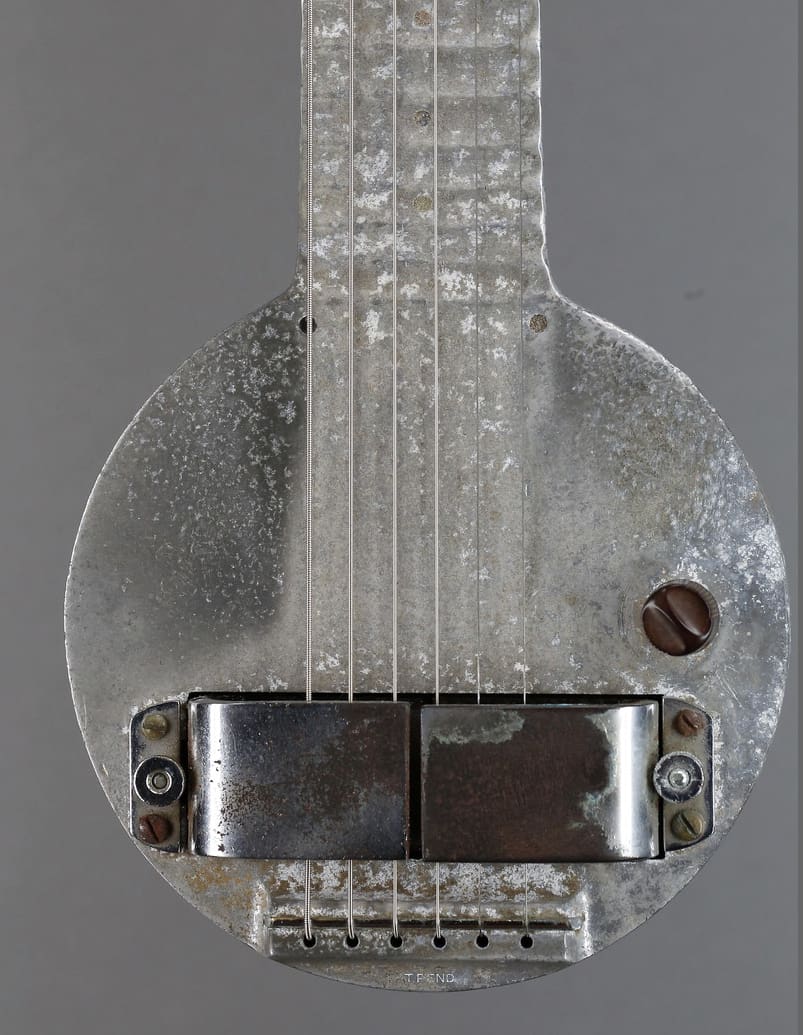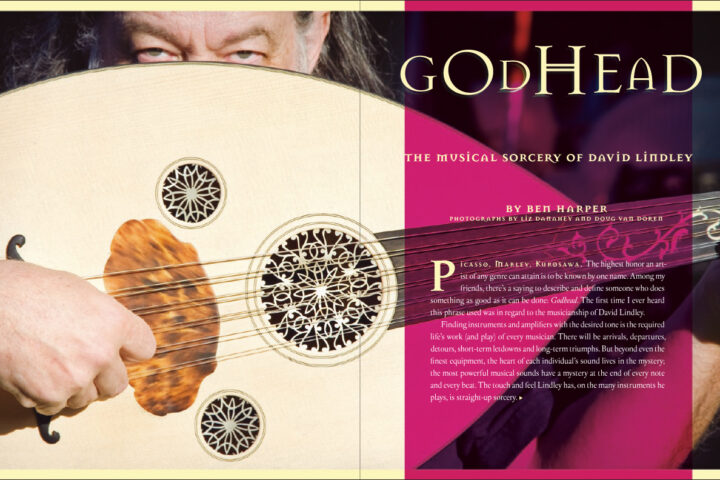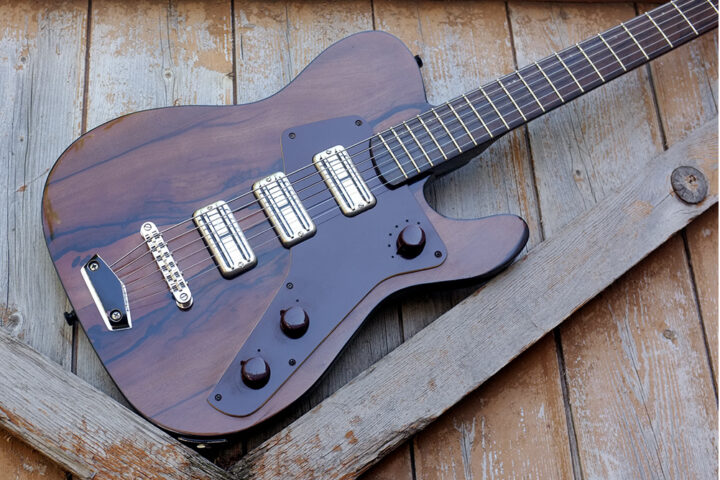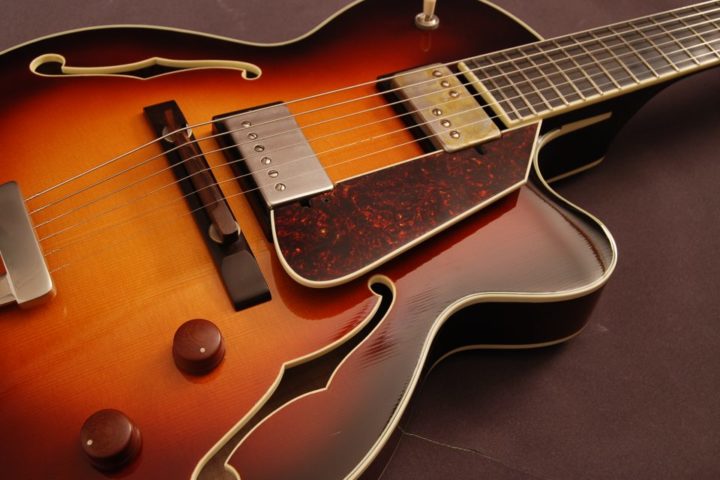1932 Rickenbacher A-22 Electro Hawaiian “Frying Pan”
A while ago I posted about a 1935 Rickenbacher Ken Roberts Electro-Spanish, one of the very first production round-neck electric guitars. (That post includes a lot of early Rickenbacker history, including info on the spelling change of the company name, that I won’t repeat here.) Today, I’d like to look at the Rickenbacher A-22 Electro Hawaiian, which was the very first production electric guitar of any sort. In the early 1930s when this guitar was designed, Hawaiian steel guitar was extremely popular. Companies like National, Weissenborn and Dobro pretty much specialized in making acoustic steel guitars while Martin, Gibson and many other builders offered them in their catalogs. When Rickenbacher brought out the Electro Hawaiian in 1932, it was first seen as a bit of a folly. Not only did it have an magnetic pickup, a new-fangled device that was unproven in the marketplace, but it was made from solid aluminum, a material with almost no resonance that must have seemed alien to luthiers who were devoted to making their instruments vibrate as much as possible.
As weird as the new guitar looked, it turned out it sounded amazing. The big horseshoe magnet gave the Electro Hawaiian a warm, singing tone and the stiff aluminum body allowed the strings to vibrate forever, giving the guitar great sustain. Leading steel players began plugging in almost immediately and within a couple of years Gibson and National were offering electrics of their own. The Electro Hawaiian was revolutionary but musicians quickly discovered the aluminum body was very susceptible to temperature change and it turned out it didn’t stay in tune under hot stage lights. In 1935 Rickenbacher introduced a steel guitar with a Bakelite body that was much more stable. The Electro Hawaiian, which was known as the Frying Pan because of its shape, was still popular with studio musicians, though, and it remained in the catalog into the 1940s.
The Electro Hawaiian was offered in two versions, the A-25, which had a long 25-inch scale length and the A-22, which had the more standard scale of 22 1/2-inches. I’ve played a few A-22s over the years and every one has sounded just wonderful. They are full and rich sounding, with a lovely warm sustain. This particular guitar looks to be in good original condition, although the most of the gold paint on its back seems to have worn off over the years. It has a single volume control. These old Ricks are historically important, but they are also really fun to play. If you’d like to add this one to your quiver, just send $2700 to the good folks at Gryphon Stringed Instruments and they will be glad to help you out.
Click here to see the original listing.
